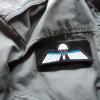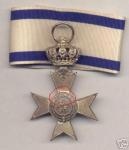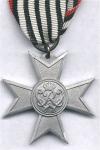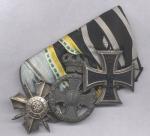-
Posts
1,009 -
Joined
-
Last visited
Content Type
Profiles
Forums
Blogs
Gallery
Events
Store
Everything posted by JensF.
-

Soviet Fake type 1 Order of Glory at Ebay
JensF. replied to JensF.'s topic in Russia: Soviet Orders, Medals & Decorations
Thanks gentlemen. I won't buy that Newski; I only wondered if it is also a fake because in my opinion it looks not bad. -

Soviet Fake type 1 Order of Glory at Ebay
JensF. replied to JensF.'s topic in Russia: Soviet Orders, Medals & Decorations
The website of the seller: http://www.sovietawards.com/ What do you think about the early type Newski he is selling there? -
I think all of the bavarian crosses with swords are made from 3. class crosses. Look carefully and you can see some copper shining through the bad silver plating. The medaillons enamel looks also very strange. The Braunschweig cross looks like a cheap crappy cast copy. Its me who bought a real silver and an aluminium Kreuz f?r Kriegshilfsdienst from them a longer time ago. I still think they are ok and these types are also listed in the Nimmergut catalogue.
-
Brave animals too! This (shortened) translation is from the book "Das unsichtbare Denkmal" (The invisible Monument), a book about the early years after the war with many phantastic pictures of the battlefields of the western front, including Verdun, Somme and Ypres as they looked like in the 20s. The author also tells many stories he heard as he walked through the former battlefields of France. His dog Many days later I walked through a flat countryside. I saw many cities and villages whose names go throught history like the sound of death. In the late afternoon I found a farm and asked the owner for a room for the night. Very soon we were sitting in the living room of the house and talked about the storm of war. Gaston Vivier, the farmer, showed me things he found as the worked on his fields. It was a box full of the relics of war. One item caught my eye; it was some kind of gear made from cotton and leather with a faded red cross on it. It was the gear of a german paramedic dog. And Gaston Vivier told me the story of the dog. It was a morning in november 1918 as a german paramedic Gefreiter got hit by a french bullet in his back. He fell into a shell crater and was unable to move anymore. His legs with his boots were lying in the water on the bottom of the hole. He tried to move but he only slipped down more and more. Through the curtain of shell fire around he suddenly saw a shadow. It was "Greif", his Sanit?tshund. He crawled through the craters and trenches with a strap and a canteen in his mouth. Then he finds his man with his helmet, tent shelter and boots and puts a canteen with red wine near his hand. The private tries to drink but his arms are not strong enough anymore. Soon it is getting dark and only the moon looks at the private and his dog while the shells are exploding around. Six months later in may 1919 Gaston Vivier was walking in the area between his grass field and the river nearby. He collects fuses and hand grenades from his fields and throws them into the river. He is standing near a dud shell, which is waiting for him with its fuse. Far away the explosion made by an EOD team can be heard. Blasting hundreds of shells in one huge explosion with the smoke rising on the horizon. But there he is standing, the dog! The dog the people in the village are talking about. He shall wear a red cross but he is attacking humans at day and night. Maybe he has rabies or is crazy. In the dark months they could hear his howling. Now he howls again. The Gaston was angry, that he forgot one of his rifles. He still had four, a french one, a german one and two british; all standing in his shed stored in oily cloths. But a hand grenade would do the same. Down at his farm a whole pile was lying. He run down in large steps, jumped over the barbed wire and searched in the pile of stick- and egg-handgrenades. He picked up two french "Citron Foug", because they had a good fragmentation for over 50 meters. One of them should get that beast! He walks carefully over his courtyard and suddenly a snarling stopps him. The dog is standing in front of him and inspects him with his large eyes. Quickly Gaston removes the safety cap from the Citron and hits the striking pin with his knee. A small bang denotes the ignition and he throws the grenade between the legs of the dog. Gaston jumps behind the remains of a wall. The dog knows this smoking thing, he moves his head away from the smoke and the smell coming out of the fuse. He lookes at the shell hole with the helmet, the tent shelter and the boots inside. Fragments cut the air with a singing sound and fall down to the earth. As the last one is silent Gaston takes a step out of his coverage. Between red flowers the dog is lying. Blood is running out of his head. Then Gaston sees the tent shelter, the helmet and the boots in the shell hole. On the other side of the hole four Tornister are lying, many canteens and breadbags all nearly overgrown by red poppies. On all of them the straps are chewed or they are cut open by teeth. Greif, the dog, removed them from the fallen and brought them to his friend. Long ago, before the wind shaked the red poppies.
-
Sachsen was also one of only two countries (also Bavaria) were an NCO/enlisted soldier could get the most military awards. Golden Military St. Henry Medal Silver Military St. Henry Medal Albert Cross with swords Honor Cross with Swords Silver Friedrich August Medal Bronze Friedrich August Medal War Merit Cross Did I forget something? In all other countries only the officers could get a "full chest". Did I forget something?
-

The Weimar Republic.
JensF. replied to John's topic in Germany: Weimar Republic & Deutsche Freikorps
In 1923 for example a bread cost around 2000000000 Reichsmark. They even stamped new values on stamps for letters because their price changed sometimes two times a day, gaining some more zeros! Somewere I have a 300 and 500 Reichsmark coin from 1923. Someone said, it was the time when everyone was a billionaire. Really crazy times then... -
A little correction, it is the Marine or Bundesmarine. No Kriegsmarine anymore, you sunk our proud Bismarck... The good side is that a conscript army produces much more reservists than a regular army and you have the so called "Staatsb?rger in Uniform" (= citizen in uniform), which means that the most male citizens have served in the army and so the army is much more spread around, especially in the mind, if you know what I mean. It is more accepted instead a regular army. It is also cheaper in my opinion. At the moment you have to serve for 9 months including 8 weeks of basic training (or are we down to 6 weeks?). Conscript soldiers can't be send to foreign missions, except they fill out a form and serve longer, for example 12 or 16 months. Otherwise the time is too short for the special mission training of minimum three weeks and the mission of 4 months. However since we are not an army "to fight", there is no "red threat" anymore, the biggest part of our work is to take part in foreign missions like KFOR, EUFOR and ISAF and to help during catastrophies. For example I served 9 months in the Luftwaffe from 1996 to 1997, became a reservist later and now I am a Sergeant First Class (Oberfeldwebel). Last year I was in Kosovo with KFOR for 6 months (now they changed to only 4 months) and there are thousands of former conscript soldiers who do it this way.













